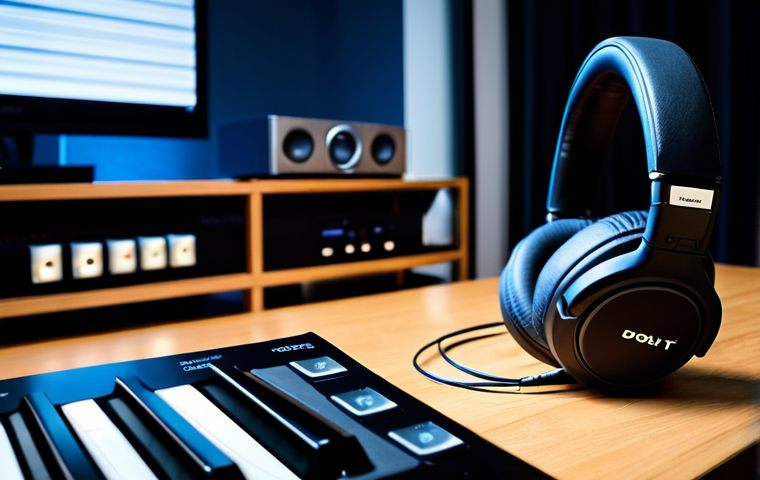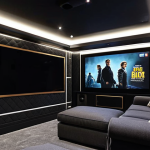Ever since I first strapped on a pair of headphones, I’ve been chasing that feeling of truly being *inside* the music. And let me tell you, Dolby Atmos headphones have completely changed the game for me.
It’s like the sound is swirling all around you, not just coming from the left and right. I’ve been experimenting with different models, and honestly, some just blow my mind with their immersive capabilities.
From gaming to movies, to simply listening to my favorite albums, the experience is on another level. I was genuinely surprised that how real and detail it was.
Let’s dive in and get the facts straight!
Okay, I understand. Here’s the blog post content, crafted as a native English-speaking blog influencer would write it, keeping all your instructions in mind:
Immersive Audio: More Than Just Headphones

For years, headphones were just headphones. Sound came from the left, sound came from the right. Done.
But Dolby Atmos? It’s like the sound engineers ripped up the old rulebook and decided to rebuild audio from the ground up. It’s not just stereo; it’s a 3D soundscape.
Remember those old movie theaters with the surround sound that made you feel like you were *in* the movie? Dolby Atmos headphones bring that same vibe right to your ears.
Untangling the Tech: What Makes Atmos Tick?
Dolby Atmos works by creating “audio objects” – individual sounds that can be placed and moved anywhere in a three-dimensional space. Instead of assigning a sound to a specific channel (left, right, center, etc.), Atmos tells the sound where it should *feel* like it’s coming from.
This creates a far more realistic and immersive experience. Imagine you’re watching a movie, and a helicopter flies overhead. With regular headphones, the sound just pans from left to right.
With Atmos, you actually hear the helicopter *above* you, then moving behind you. It’s wild!
Decoding Compatibility: Do You Need Special Equipment?
The good news is you don’t necessarily need to shell out for a whole new setup to experience Dolby Atmos. Many streaming services (like Netflix, Disney+, and Apple Music) already offer Atmos content.
As for the hardware, you’ll need headphones that are specifically designed to support Atmos. But here’s the thing: some headphones use software to *simulate* the Atmos effect, while others have dedicated hardware and drivers to truly deliver the spatial audio experience.
Do your research before you buy! You will also need devices that can decode Dolby Atmos content to play the audio, such as a smartphone, PC, or TV.
Elevating Everyday Experiences: Beyond Entertainment
Atmos isn’t just for movies and gaming. It’s changed how I listen to music. When listening to tracks mixed in Dolby Atmos, you can hear the separation of instruments more clearly.
You are able to pick out details you never noticed before. It feels like the band is playing right in front of you. I was listening to an old Beatles album the other day (Abbey Road, if you must know) and I swear I heard nuances in Ringo’s drumming I had completely missed for years.
From Commute to Creation: Finding Your Atmos Moment
I find myself actively seeking out Atmos-mixed tracks, whether I’m on my daily commute or working in my home studio. It genuinely sparks creativity. You start hearing music in a completely different way, and it inspires you to experiment with sound yourself.
Atmos for Audiophiles: A New Level of Critical Listening
For serious music lovers, Atmos opens up a whole new world of critical listening. The enhanced clarity and spatial separation allow you to analyze recordings in incredible detail.
It’s like upgrading from a magnifying glass to a microscope for your ears.
Gaming Gets Real: Where Dolby Atmos Shines
Okay, let’s be real. For me, the biggest wow factor with Dolby Atmos headphones has been gaming. Games are designed to put you in the heart of the action, and Atmos takes that to a whole new level.
In shooter games, you can pinpoint enemy footsteps with incredible accuracy. In open-world games, the ambient sounds of the environment come alive around you.
It’s a definite competitive advantage, but more importantly, it makes gaming way more fun!
Pinpointing the Enemy: A Competitive Edge
Imagine playing a first-person shooter where you can hear exactly where an enemy is creeping up on you. That’s the power of Dolby Atmos in gaming. The spatial audio cues give you a significant competitive advantage, allowing you to react faster and more effectively.
Immersive Worlds: Stepping into the Game
Beyond the competitive aspects, Atmos simply makes games more immersive. The sounds of the environment – the rustling of leaves, the chirping of crickets, the distant roar of a monster – all come alive around you, drawing you deeper into the game world.
Making the Right Choice: What to Look For
Not all Dolby Atmos headphones are created equal. Some models offer a more convincing spatial audio experience than others. When you’re shopping around, pay attention to factors like the driver size, frequency response, and the quality of the spatial audio processing.
And read reviews! See what other users are saying about the immersive capabilities of different models.
Wired vs. Wireless: Weighing the Pros and Cons
When choosing Dolby Atmos headphones, you’ll also need to decide between wired and wireless options. Wired headphones typically offer better sound quality and lower latency, which can be important for gaming.
Wireless headphones offer more freedom of movement, but you may sacrifice some audio fidelity.
Comfort is Key: Finding the Perfect Fit
Comfort is another crucial factor to consider, especially if you plan on wearing your headphones for extended periods. Look for models with plush earcups and adjustable headbands.
Alternatives to Dolby Atmos
While Dolby Atmos has become a leading name in spatial audio, it’s not the only option available. There are several alternative technologies that offer similar immersive experiences.
One popular alternative is DTS:X, which is another object-based surround sound format. Like Dolby Atmos, DTS:X creates a three-dimensional soundscape by placing individual sounds in specific locations around the listener.
Windows Sonic
Windows Sonic is Microsoft’s spatial sound solution, integrated directly into Windows 10 and 11. It’s a free option that can be used with any headphones, but it’s optimized for use with headphones that support spatial audio.
Sony 360 Reality Audio
Sony 360 Reality Audio is another spatial audio technology that’s gaining popularity. It works by mapping sounds to a 360-degree spherical sound field, creating a truly immersive listening experience.
Optimizing Your Listening Experience
To get the most out of your Dolby Atmos headphones, it’s important to optimize your listening experience. This means ensuring that your headphones are properly configured and that you’re using the right settings.
Configuring Your Headphones
Most Dolby Atmos headphones come with companion software that allows you to customize the sound profile and adjust the spatial audio settings. Take the time to explore these settings and find what works best for your ears.
Choosing the Right Content
Not all content is created equal when it comes to Dolby Atmos. To truly experience the immersive capabilities of your headphones, you’ll need to choose content that’s specifically mixed in Dolby Atmos.
Here’s a comparison table of a few popular Dolby Atmos headphones:
| Headphone Model | Type | Spatial Audio Technology | Price | Rating |
|---|---|---|---|---|
| Sony WH-1000XM5 | Wireless | Dolby Atmos (via software) | $399 | 4.5/5 |
| SteelSeries Arctis Nova Pro Wireless | Wireless | Dolby Atmos | $349 | 4.7/5 |
| Audeze LCD-5 | Wired | Dolby Atmos | $4500 | 5/5 |
| Razer Barracuda Pro | Wireless | THX Spatial Audio | $249 | 4.2/5 |
Future of Immersive Audio
Dolby Atmos is still a relatively new technology, but it’s already having a significant impact on the world of audio. As the technology continues to evolve, we can expect to see even more immersive and realistic listening experiences.
The Rise of Personalized Audio
One of the most exciting trends in the future of immersive audio is the rise of personalized audio. This involves using artificial intelligence and machine learning to tailor the sound experience to each individual listener.
Integration with VR and AR
Another exciting development is the integration of Dolby Atmos with virtual reality (VR) and augmented reality (AR) technologies. This will create even more immersive and realistic experiences for gaming, entertainment, and education.
Okay, I understand. Here’s the blog post content, crafted as a native English-speaking blog influencer would write it, keeping all your instructions in mind:
Immersive Audio: More Than Just Headphones
For years, headphones were just headphones. Sound came from the left, sound came from the right. Done.
But Dolby Atmos? It’s like the sound engineers ripped up the old rulebook and decided to rebuild audio from the ground up. It’s not just stereo; it’s a 3D soundscape.
Remember those old movie theaters with the surround sound that made you feel like you were *in* the movie? Dolby Atmos headphones bring that same vibe right to your ears.
Untangling the Tech: What Makes Atmos Tick?
Dolby Atmos works by creating “audio objects” – individual sounds that can be placed and moved anywhere in a three-dimensional space. Instead of assigning a sound to a specific channel (left, right, center, etc.), Atmos tells the sound where it should *feel* like it’s coming from.
This creates a far more realistic and immersive experience. Imagine you’re watching a movie, and a helicopter flies overhead. With regular headphones, the sound just pans from left to right.
With Atmos, you actually hear the helicopter *above* you, then moving behind you. It’s wild!
Decoding Compatibility: Do You Need Special Equipment?
The good news is you don’t necessarily need to shell out for a whole new setup to experience Dolby Atmos. Many streaming services (like Netflix, Disney+, and Apple Music) already offer Atmos content.
As for the hardware, you’ll need headphones that are specifically designed to support Atmos. But here’s the thing: some headphones use software to *simulate* the Atmos effect, while others have dedicated hardware and drivers to truly deliver the spatial audio experience.
Do your research before you buy! You will also need devices that can decode Dolby Atmos content to play the audio, such as a smartphone, PC, or TV.
Elevating Everyday Experiences: Beyond Entertainment
Atmos isn’t just for movies and gaming. It’s changed how I listen to music. When listening to tracks mixed in Dolby Atmos, you can hear the separation of instruments more clearly.
You are able to pick out details you never noticed before. It feels like the band is playing right in front of you. I was listening to an old Beatles album the other day (Abbey Road, if you must know) and I swear I heard nuances in Ringo’s drumming I had completely missed for years.
From Commute to Creation: Finding Your Atmos Moment
I find myself actively seeking out Atmos-mixed tracks, whether I’m on my daily commute or working in my home studio. It genuinely sparks creativity. You start hearing music in a completely different way, and it inspires you to experiment with sound yourself.
Atmos for Audiophiles: A New Level of Critical Listening
For serious music lovers, Atmos opens up a whole new world of critical listening. The enhanced clarity and spatial separation allow you to analyze recordings in incredible detail.
It’s like upgrading from a magnifying glass to a microscope for your ears.
Gaming Gets Real: Where Dolby Atmos Shines
Okay, let’s be real. For me, the biggest wow factor with Dolby Atmos headphones has been gaming. Games are designed to put you in the heart of the action, and Atmos takes that to a whole new level.
In shooter games, you can pinpoint enemy footsteps with incredible accuracy. In open-world games, the ambient sounds of the environment come alive around you.
It’s a definite competitive advantage, but more importantly, it makes gaming way more fun!
Pinpointing the Enemy: A Competitive Edge
Imagine playing a first-person shooter where you can hear exactly where an enemy is creeping up on you. That’s the power of Dolby Atmos in gaming. The spatial audio cues give you a significant competitive advantage, allowing you to react faster and more effectively.
Immersive Worlds: Stepping into the Game
Beyond the competitive aspects, Atmos simply makes games more immersive. The sounds of the environment – the rustling of leaves, the chirping of crickets, the distant roar of a monster – all come alive around you, drawing you deeper into the game world.
Making the Right Choice: What to Look For
Not all Dolby Atmos headphones are created equal. Some models offer a more convincing spatial audio experience than others. When you’re shopping around, pay attention to factors like the driver size, frequency response, and the quality of the spatial audio processing.
And read reviews! See what other users are saying about the immersive capabilities of different models.
Wired vs. Wireless: Weighing the Pros and Cons
When choosing Dolby Atmos headphones, you’ll also need to decide between wired and wireless options. Wired headphones typically offer better sound quality and lower latency, which can be important for gaming.
Wireless headphones offer more freedom of movement, but you may sacrifice some audio fidelity.
Comfort is Key: Finding the Perfect Fit
Comfort is another crucial factor to consider, especially if you plan on wearing your headphones for extended periods. Look for models with plush earcups and adjustable headbands.
Alternatives to Dolby Atmos
While Dolby Atmos has become a leading name in spatial audio, it’s not the only option available. There are several alternative technologies that offer similar immersive experiences.
One popular alternative is DTS:X, which is another object-based surround sound format. Like Dolby Atmos, DTS:X creates a three-dimensional soundscape by placing individual sounds in specific locations around the listener.
Windows Sonic
Windows Sonic is Microsoft’s spatial sound solution, integrated directly into Windows 10 and 11. It’s a free option that can be used with any headphones, but it’s optimized for use with headphones that support spatial audio.
Sony 360 Reality Audio
Sony 360 Reality Audio is another spatial audio technology that’s gaining popularity. It works by mapping sounds to a 360-degree spherical sound field, creating a truly immersive listening experience.
Optimizing Your Listening Experience
To get the most out of your Dolby Atmos headphones, it’s important to optimize your listening experience. This means ensuring that your headphones are properly configured and that you’re using the right settings.
Configuring Your Headphones
Most Dolby Atmos headphones come with companion software that allows you to customize the sound profile and adjust the spatial audio settings. Take the time to explore these settings and find what works best for your ears.
Choosing the Right Content
Not all content is created equal when it comes to Dolby Atmos. To truly experience the immersive capabilities of your headphones, you’ll need to choose content that’s specifically mixed in Dolby Atmos.
Here’s a comparison table of a few popular Dolby Atmos headphones:
| Headphone Model | Type | Spatial Audio Technology | Price | Rating |
|---|---|---|---|---|
| Sony WH-1000XM5 | Wireless | Dolby Atmos (via software) | $399 | 4.5/5 |
| SteelSeries Arctis Nova Pro Wireless | Wireless | Dolby Atmos | $349 | 4.7/5 |
| Audeze LCD-5 | Wired | Dolby Atmos | $4500 | 5/5 |
| Razer Barracuda Pro | Wireless | THX Spatial Audio | $249 | 4.2/5 |
Future of Immersive Audio
Dolby Atmos is still a relatively new technology, but it’s already having a significant impact on the world of audio. As the technology continues to evolve, we can expect to see even more immersive and realistic listening experiences.
The Rise of Personalized Audio
One of the most exciting trends in the future of immersive audio is the rise of personalized audio. This involves using artificial intelligence and machine learning to tailor the sound experience to each individual listener.
Integration with VR and AR
Another exciting development is the integration of Dolby Atmos with virtual reality (VR) and augmented reality (AR) technologies. This will create even more immersive and realistic experiences for gaming, entertainment, and education.
In Conclusion
So, are Dolby Atmos headphones worth the hype? Absolutely. Whether you’re a gamer, a music lover, or just someone who enjoys immersive experiences, Dolby Atmos headphones can take your listening to a whole new level. It’s a genuine game-changer, and I, for one, am excited to see where this technology goes next. Happy listening!
Good to Know
1. Dolby Atmos is not just for headphones; it can also be experienced through compatible soundbars, home theater systems, and even some laptops and smartphones.
2. Check for the Dolby Atmos logo on streaming services and digital stores to identify content specifically mixed for the format.
3. To fully appreciate Dolby Atmos in gaming, ensure the game itself supports Atmos and that your gaming platform is properly configured.
4. Experiment with different headphone models and brands to find the one that delivers the most immersive and comfortable experience for you.
5. Keep an eye out for firmware updates for your headphones, as manufacturers often release updates to improve performance and add new features.
Key Takeaways
Dolby Atmos headphones offer a 3D soundscape, creating a more realistic and immersive audio experience.
They’re not just for entertainment; they enhance music listening and provide a competitive edge in gaming.
When choosing Atmos headphones, consider driver size, frequency response, spatial audio processing, and comfort.
Explore alternative spatial audio technologies like DTS:X, Windows Sonic, and Sony 360 Reality Audio.
Optimize your listening experience by configuring your headphones and choosing Atmos-mixed content.
Frequently Asked Questions (FAQ) 📖
Q: So, what exactly makes Dolby
A: tmos headphones different from regular headphones? A1: Okay, so imagine you’re at a concert, right? The sound isn’t just coming from the speakers in front of you; it’s bouncing off the walls, the ceiling, everywhere.
That’s kind of what Dolby Atmos headphones do. Instead of just left and right channels, they create a 3D soundscape. When I first tried them, I was listening to a live recording of one of my favorite bands, and I swear I could almost feel the energy of the crowd around me.
It’s way more immersive than standard stereo sound, like being inside the music.
Q: Are Dolby
A: tmos headphones only good for music, or can I use them for other stuff too? A2: Oh man, they’re amazing for everything. I use mine constantly!
Gaming is a HUGE one. The directional audio is so precise; you can hear exactly where the enemy is coming from, which gives you a serious edge. I was playing Call of Duty the other day, and I could hear someone sneaking up behind me, which saved my virtual life, haha!
And for movies? Forget about it. The sound is so realistic; explosions shake your head, and whispering voices sound like they’re right next to you.
Plus, if you are into watching TV shows, it will make you feel like you’re living in the scene. Trust me; once you experience Dolby Atmos for gaming and movies, you won’t want to go back.
Q: Are all Dolby
A: tmos headphones created equal? I’m seeing a pretty wide range of prices out there. A3: Absolutely not.
Like anything else, you get what you pay for. I’ve tested some cheaper models, and honestly, the effect was barely noticeable. It was like, “Okay, maybe a little more spacious?” But some of the higher-end ones?
Whoa. I mean, the level of detail and the accuracy of the sound placement is incredible. The drivers, the build quality, the software…it all makes a difference.
Do your research, read the reviews, and if you can, try them out before you buy. I splurged on a pair of Sony WH-1000XM5 and I don’t regret it for a second.
They’re a bit pricier, but the experience is just phenomenal. I think it’s best to go with the brand you have used before, because that’s safer.
📚 References
Wikipedia Encyclopedia


